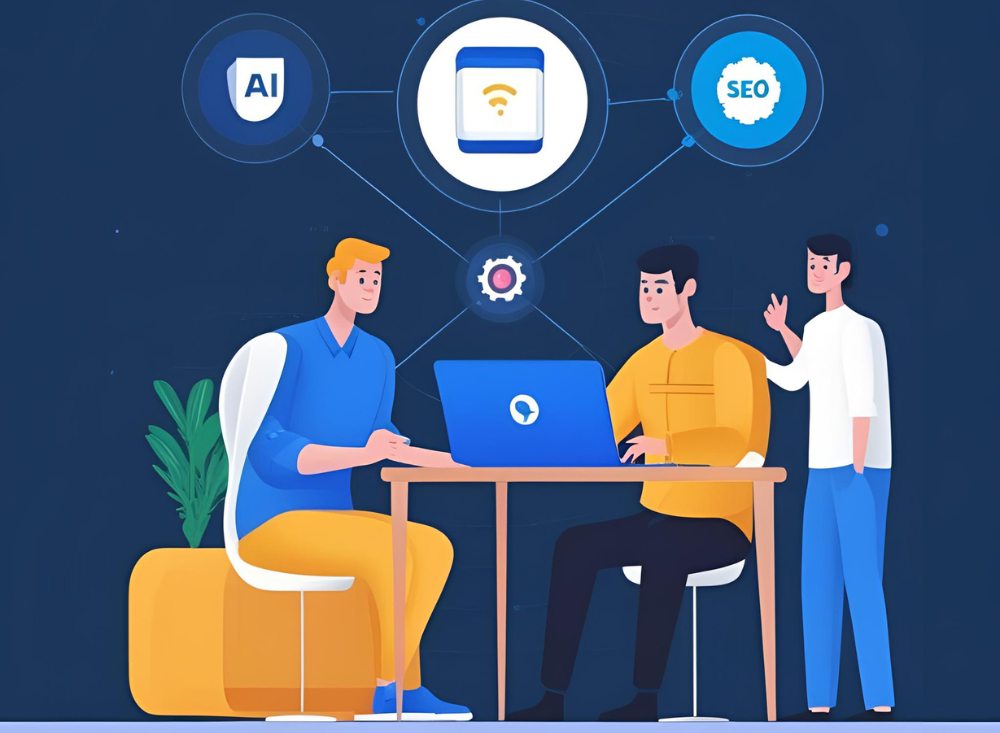
Artificial Intelligence (AI) is significantly transforming how search engines work, and this means Search Engine Optimization (SEO) needs to change too. The shift isn’t something to prepare for in the future; it’s happening right now. Relying only on older SEO methods might mean falling behind.
But don’t worry! Adapting to AI-driven SEO is less about complex new rules and more about shifting focus. Here’s a simple breakdown of how key SEO areas are evolving:
1. Where We Aim to Rank
- Old Way: The main goal was getting to the top of the standard search results page — those familiar “10 blue links.” Getting a featured snippet (Position Zero) was also a key target.
- New Way (AI Era): Search engines increasingly use AI to provide direct answers and summaries (often called “AI Overviews”) right at the top. Even if your website ranks #1 organically, it might appear below these AI answers, ads, and local results. The new focus is on getting your information featured directly within these AI Overviews, making visibility more complex than just aiming for the top link.
2. Where Our Traffic Comes From
- Old Way: Most SEOs tracked website traffic coming from Google searches using tools like Google Search Console. Other search engines were often a secondary thought.
- New Way (AI Era): People are now getting answers directly from AI chatbots (like ChatGPT, Perplexity, Bing Chat, etc.). When these bots link to your site, the traffic comes from a different source. It’s now crucial to use web analytics tools (like Google Analytics 4) to track referral traffic from these AI platforms to understand the full picture of where visitors originate.
3. How We Create Content
- Old Way: Content was often built around specific keywords found through research. Matching keywords exactly and focusing on word count were common practices.
- New Way (AI Era): AI understands the meaning and context of searches, not just exact keywords. Content now needs semantic relevance — meaning it should cover a topic thoroughly and naturally. Just stuffing keywords won’t work well. Additionally, structured data (Schema markup), which helps search engines understand your content’s details, becomes even more important for AI.
4. How We Optimize Pages
- Old Way: On-page optimization involved technical elements like meta titles, descriptions, headings, and image alt text, mainly aimed at helping traditional search engines understand the page structure.
- New Way (AI Era): Optimization now includes making content easy for AI models to use. A simple but effective tactic is adding a short summary (a “TL;DR” — Too Long; Didn’t Read) at the beginning of your articles. While meta descriptions help users before they click, this summary helps AI (and readers) quickly grasp the main points on the page. Using specific Schema types like “Speakable” can also help.
5. How We Measure Success
- Old Way: Success was mainly measured by tracking keyword rankings, clicks, and impressions shown in tools like Google Search Console.
- New Way (AI Era): While traditional metrics still matter, measurement must expand. Key new areas to track include:
- Traffic directly referred by AI chatbots.
- How often your site is mentioned or cited within AI Overviews and answers. (Tracking mentions is still evolving but vital for understanding true visibility).
In Conclusion
AI is changing the rules of the SEO game. It doesn’t mean SEO is dead, but it does mean strategies need to adapt. By focusing on semantic content, utilizing structured data, tracking new traffic sources like AI referrals, and optimizing for how AI understands information, you can ensure your website stays visible and effective in this evolving digital landscape.